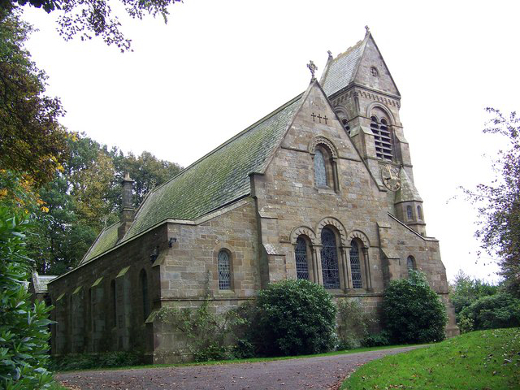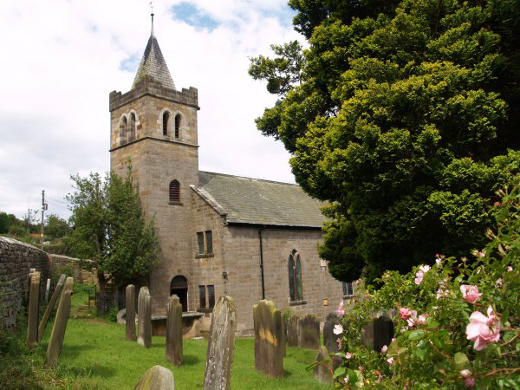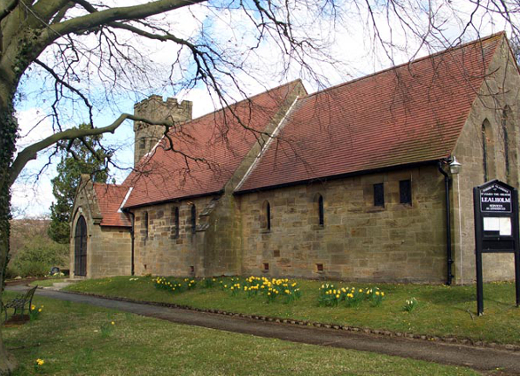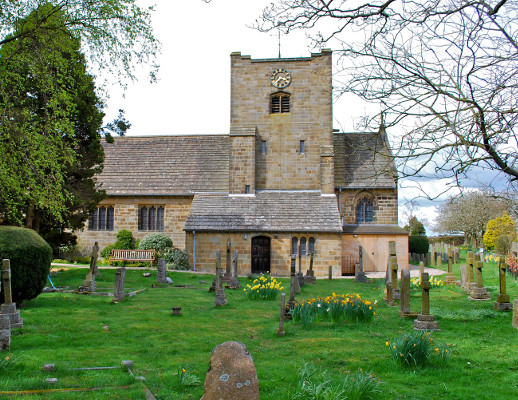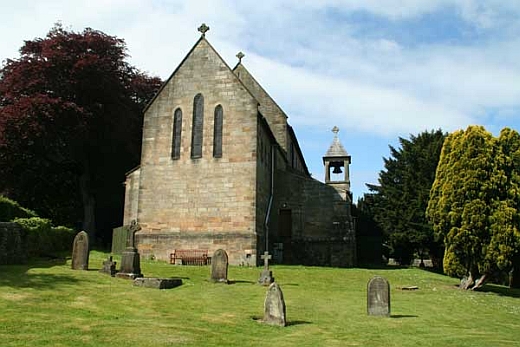Egton St Hilda
(N 54.44167, W -0.75333) Postcode: YO21 1UTPart of Egton village lies about six miles WSW of Whitby near an ancient crossing point in the Esk valley. The other part lies 700 feet higher, atop the steep valley sides. Until the mid‑nineteenth century Egton was part of the parish of Lythe, but there are records of a place of worship here as early as 1349. It was probably beside the road to Glaisdale half a mile west of the present church. Successive churches of St Hilda were built at this site until 1878: in that year the church was pulled down and re-erected at its present site by the three brothers Foster of Egton Manor. The church contains a richness of heraldic references to the family. With part of its walls and churchyard gate, t is Grade II listed. The design was by Whitby architect E. H. Smales (also see Hawsker All Saints) in a mixture of Norman and Gothic styles. Notable features are its hammer beam roof, and beautiful reredos and font in Caen stone. The stained glass includes two windows by Arthur J.Dix: one depicting St Hilda, and another, in memory of the wife of one of the brothers, depicting St Elizabeth of Hungary. In due course, the remainder of the church at the old site was built up into a mortuary chapel which recently has been refurbished.
The Deanery Synod Representatives are not appointed.
More information may be found at:
http://www.mideskbenefice.org.uk
http://acny.org.uk/19369/
